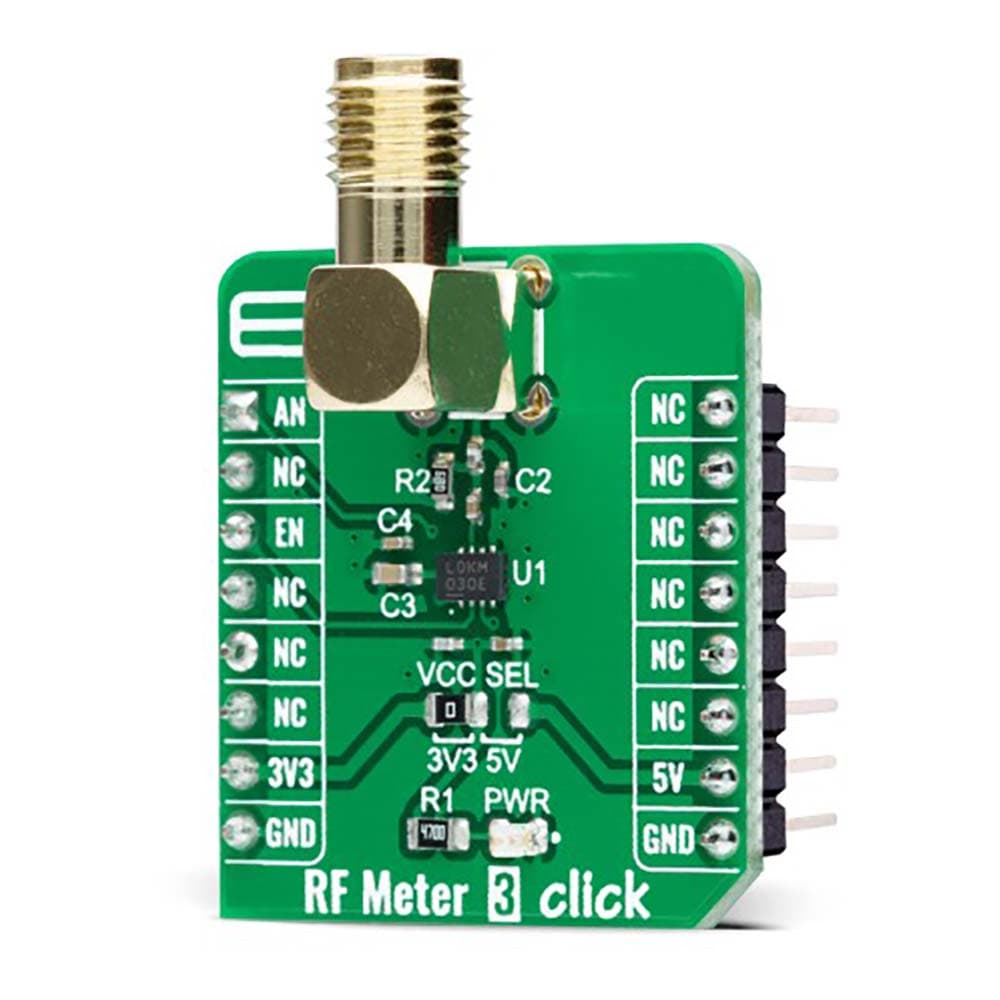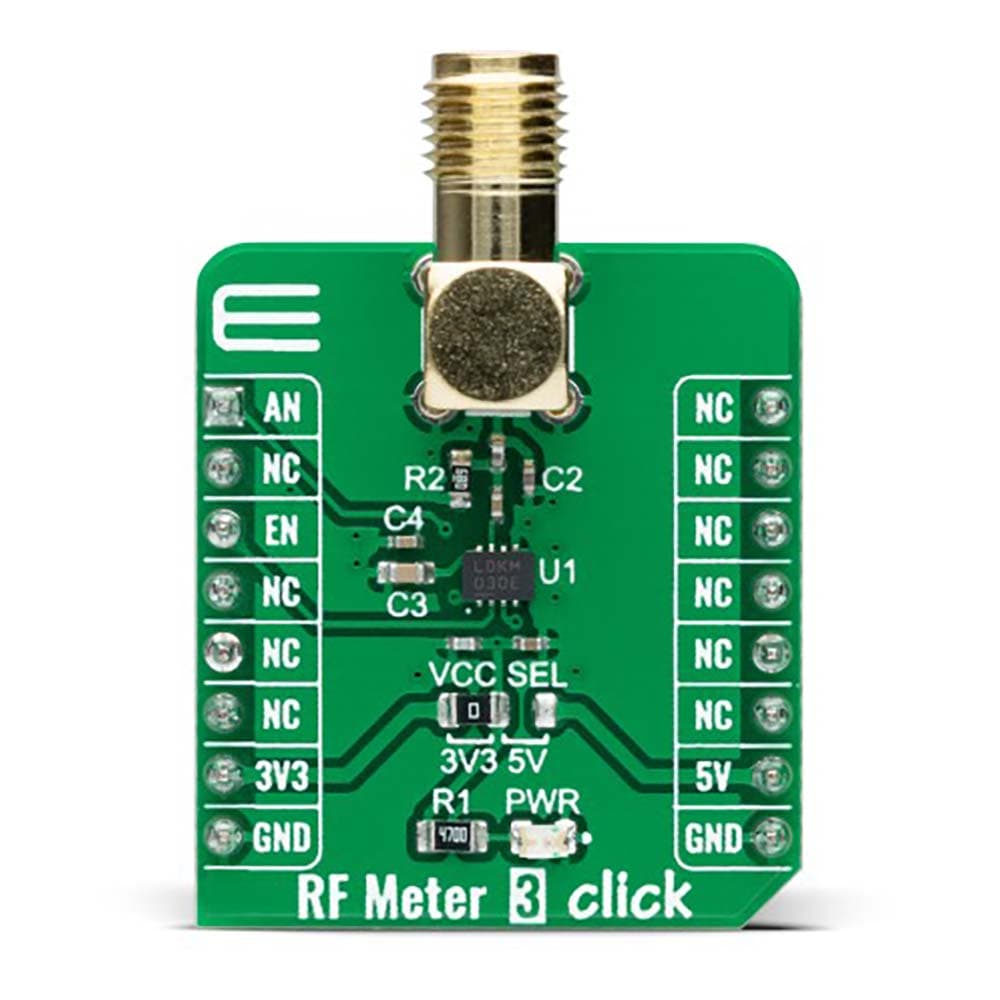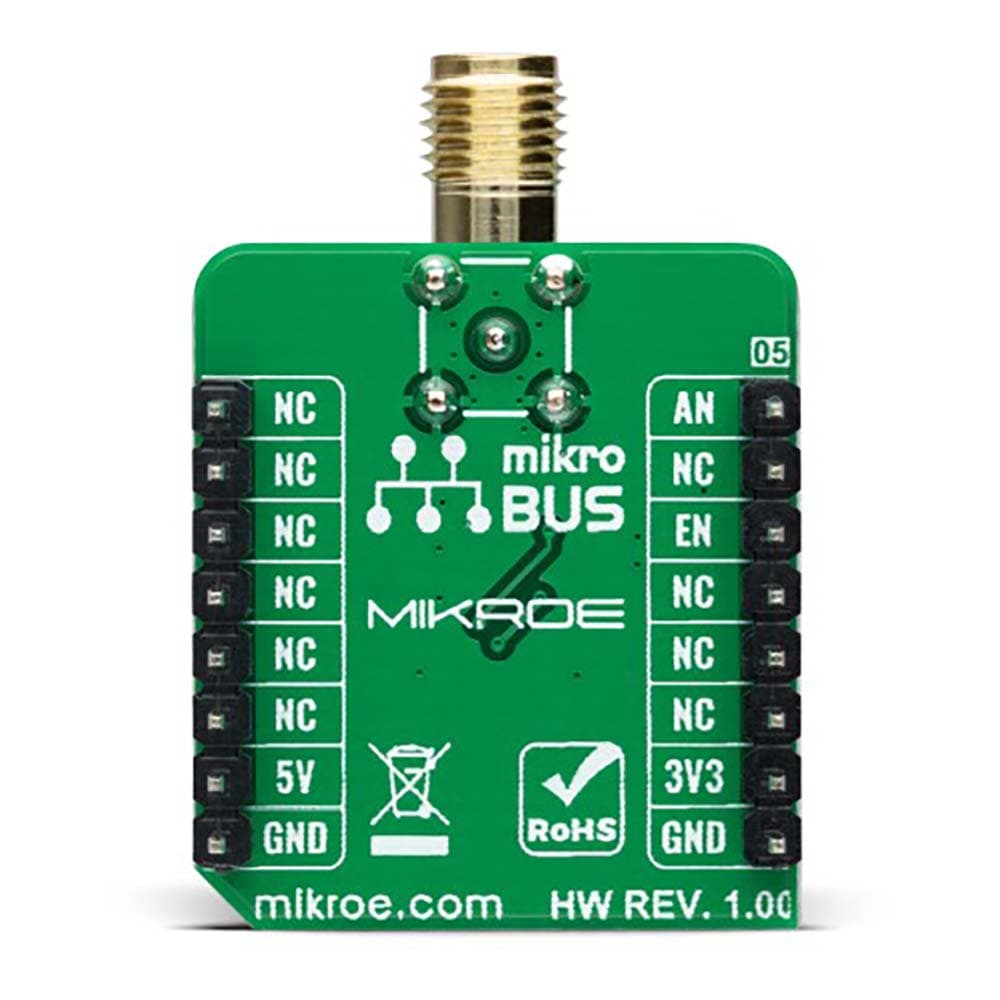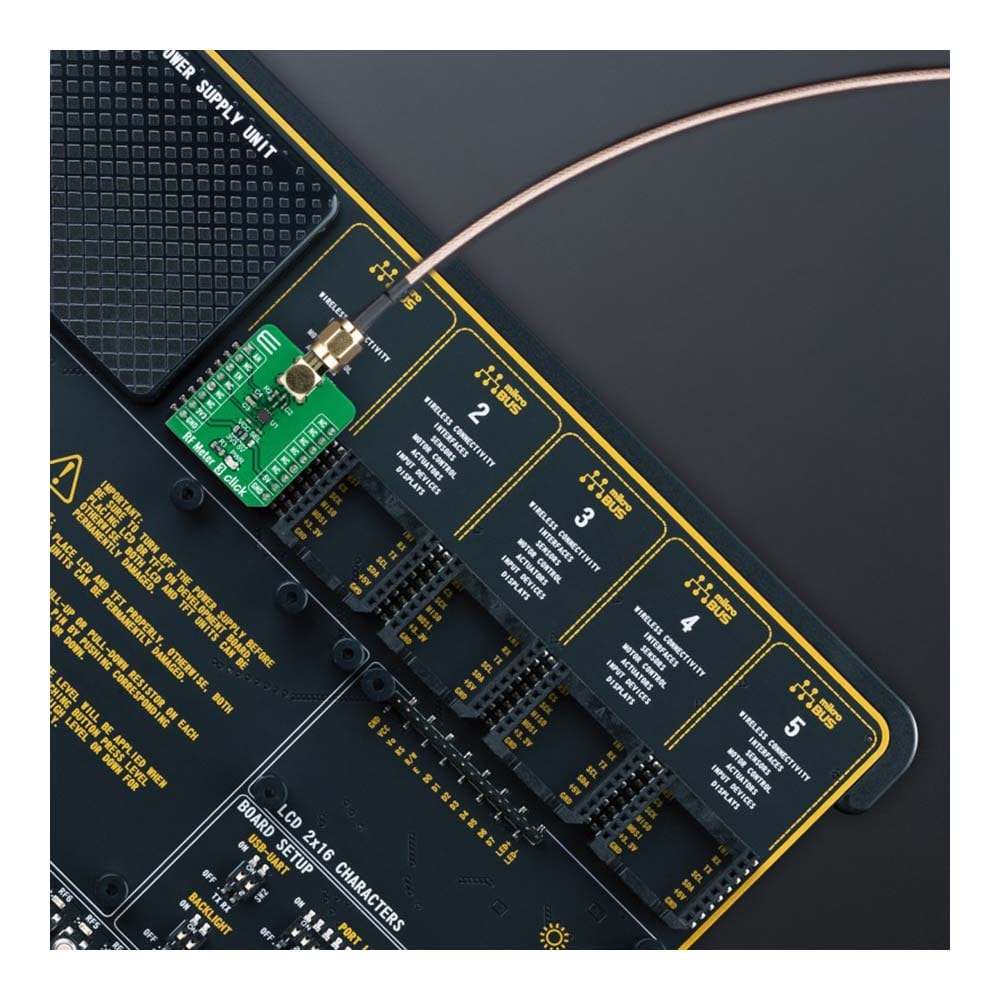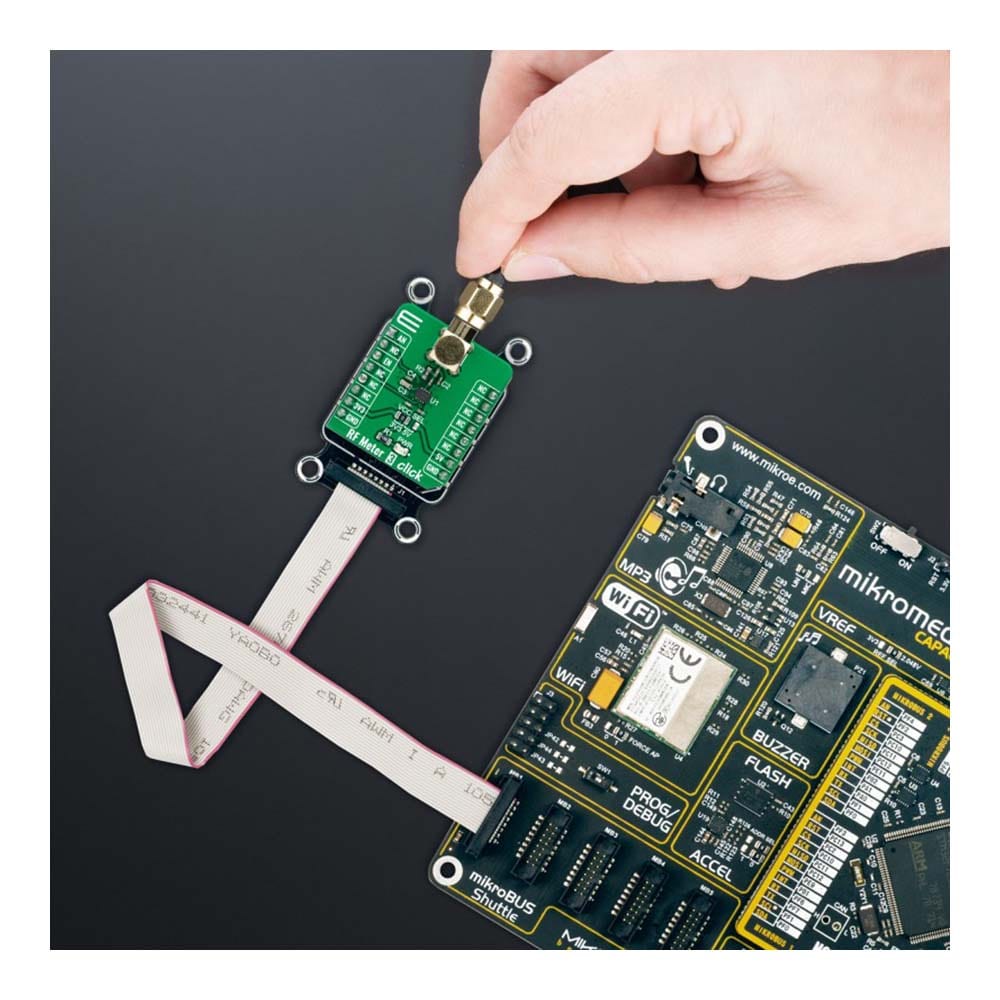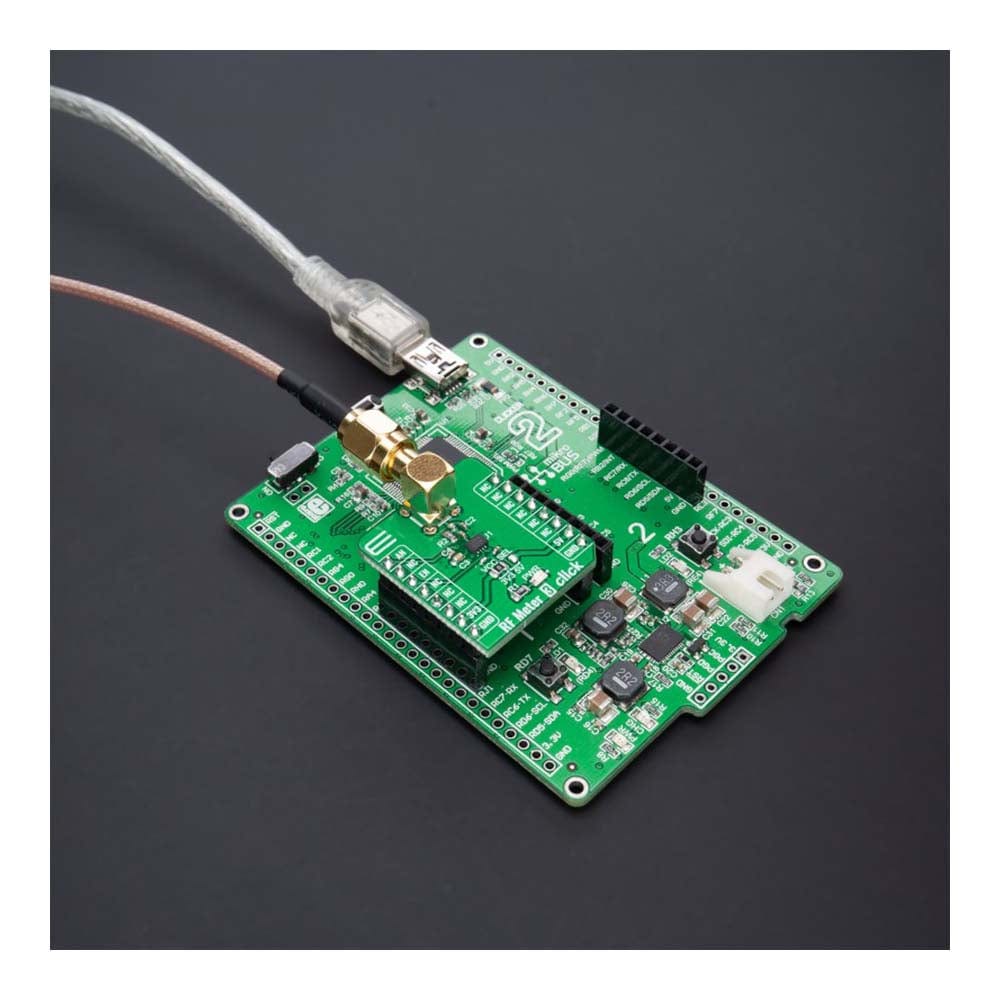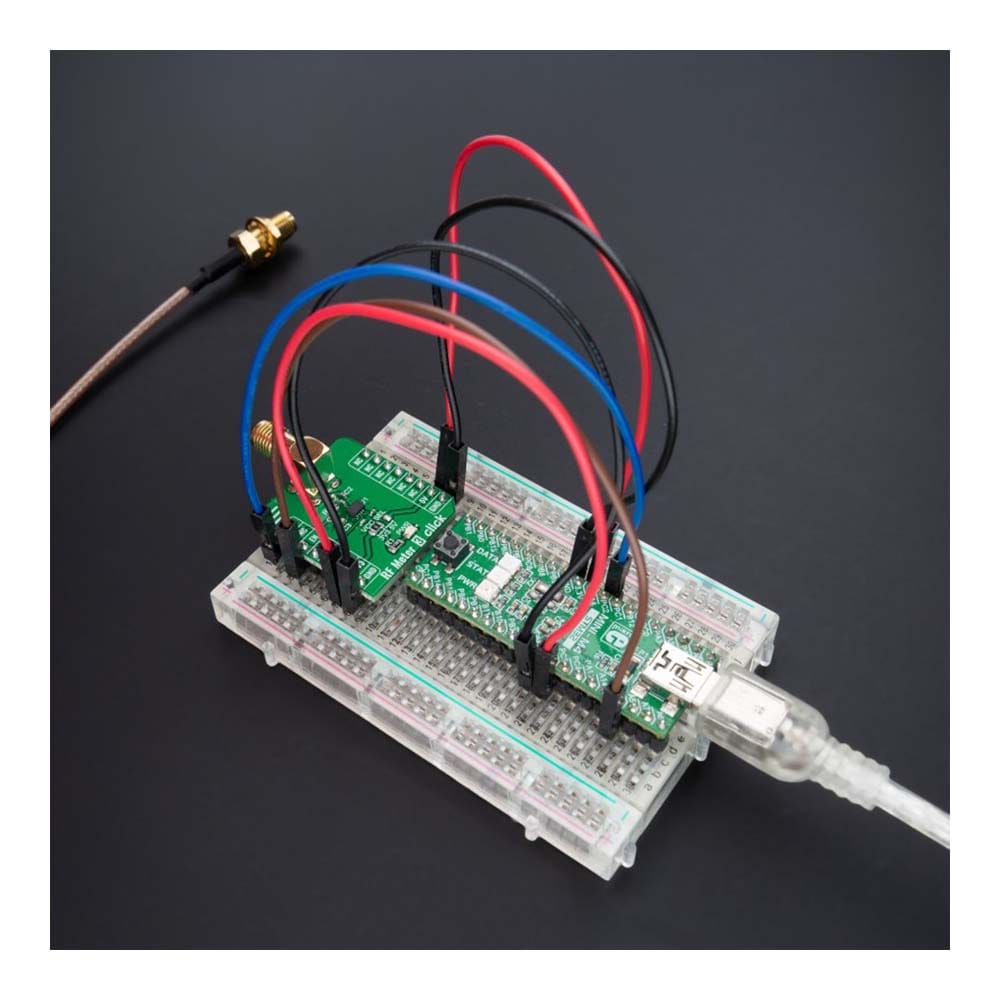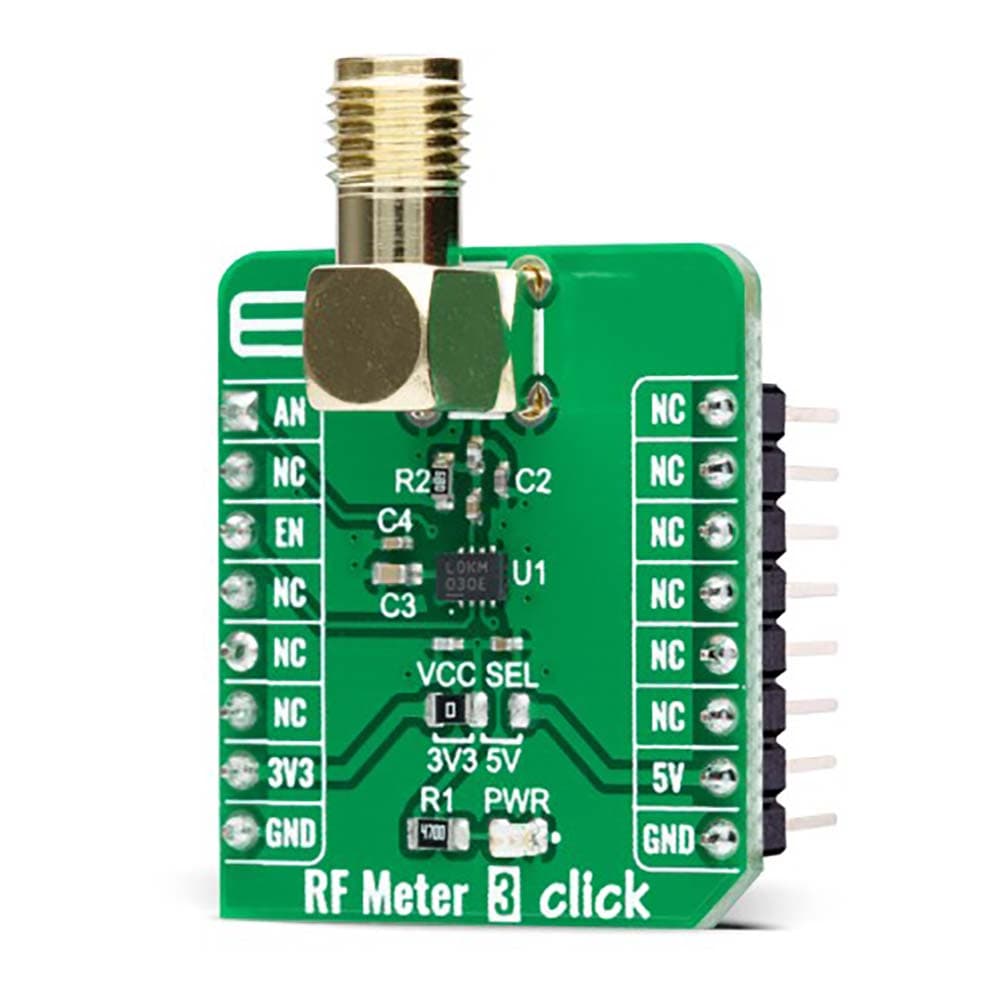
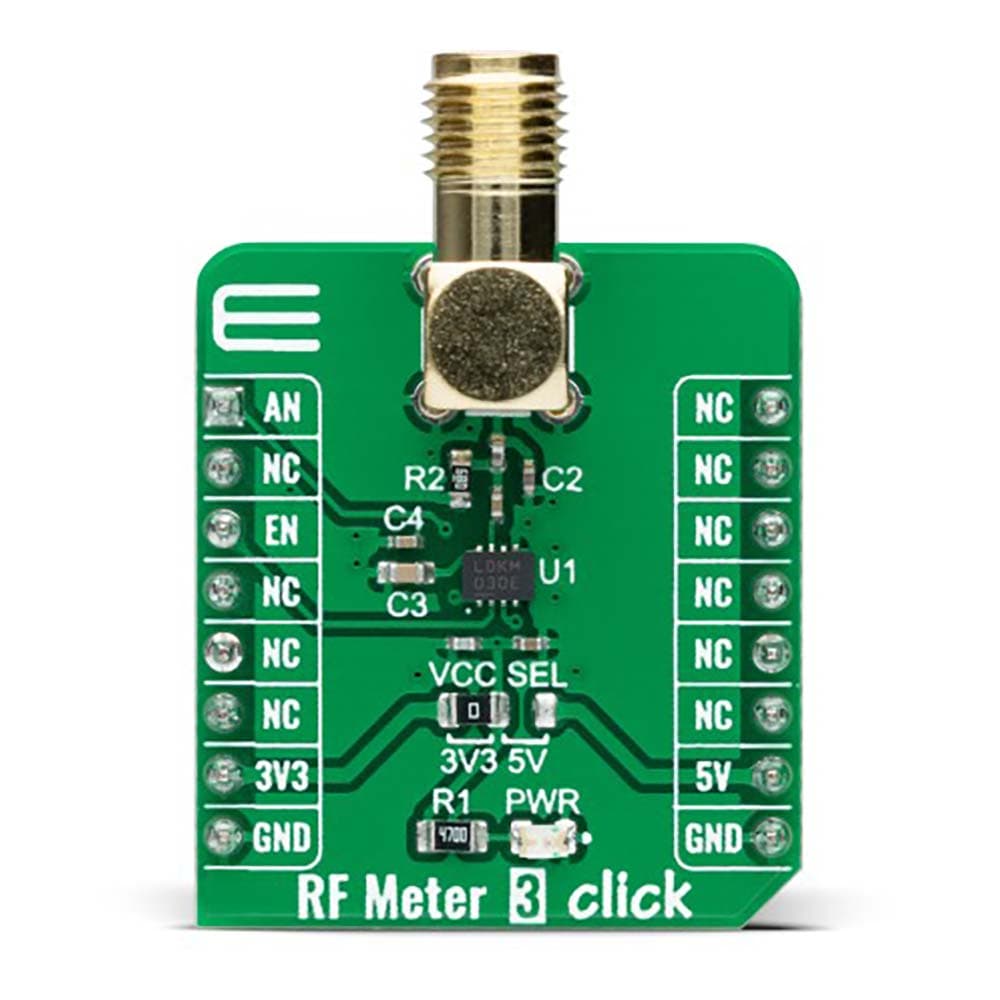
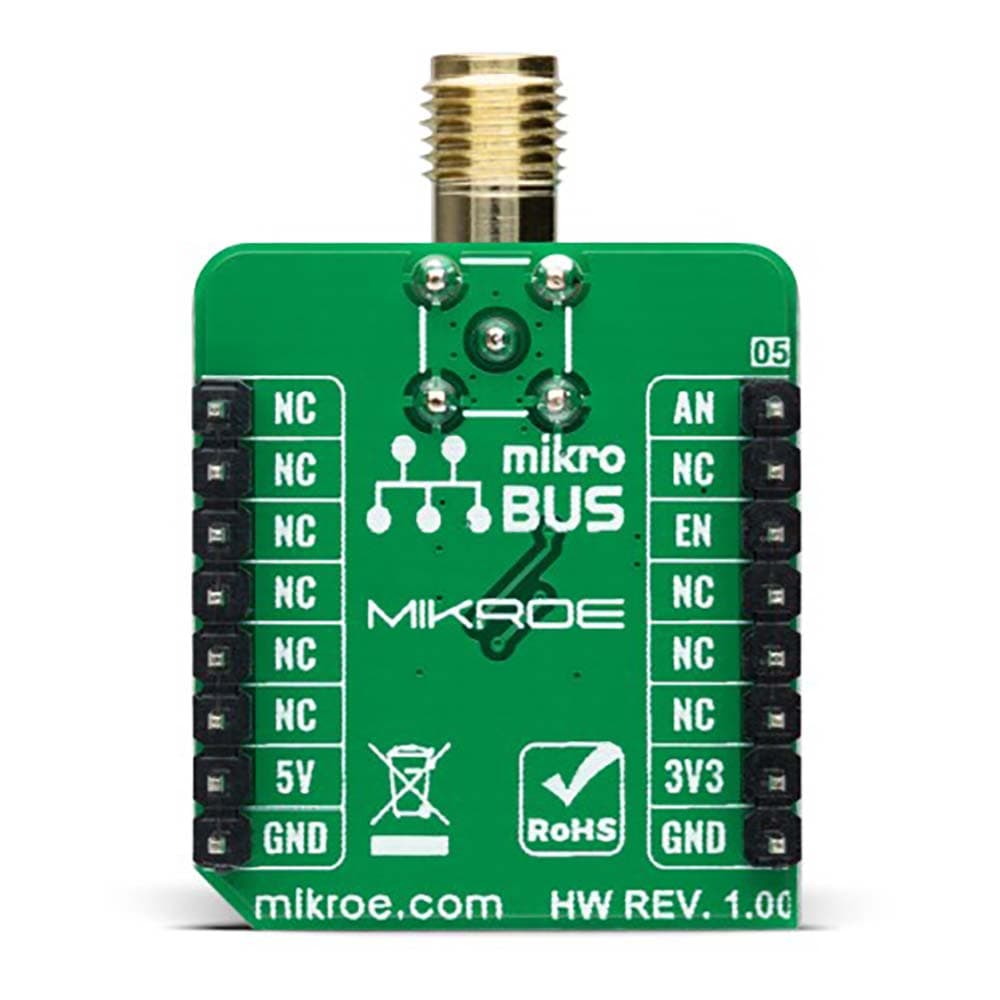
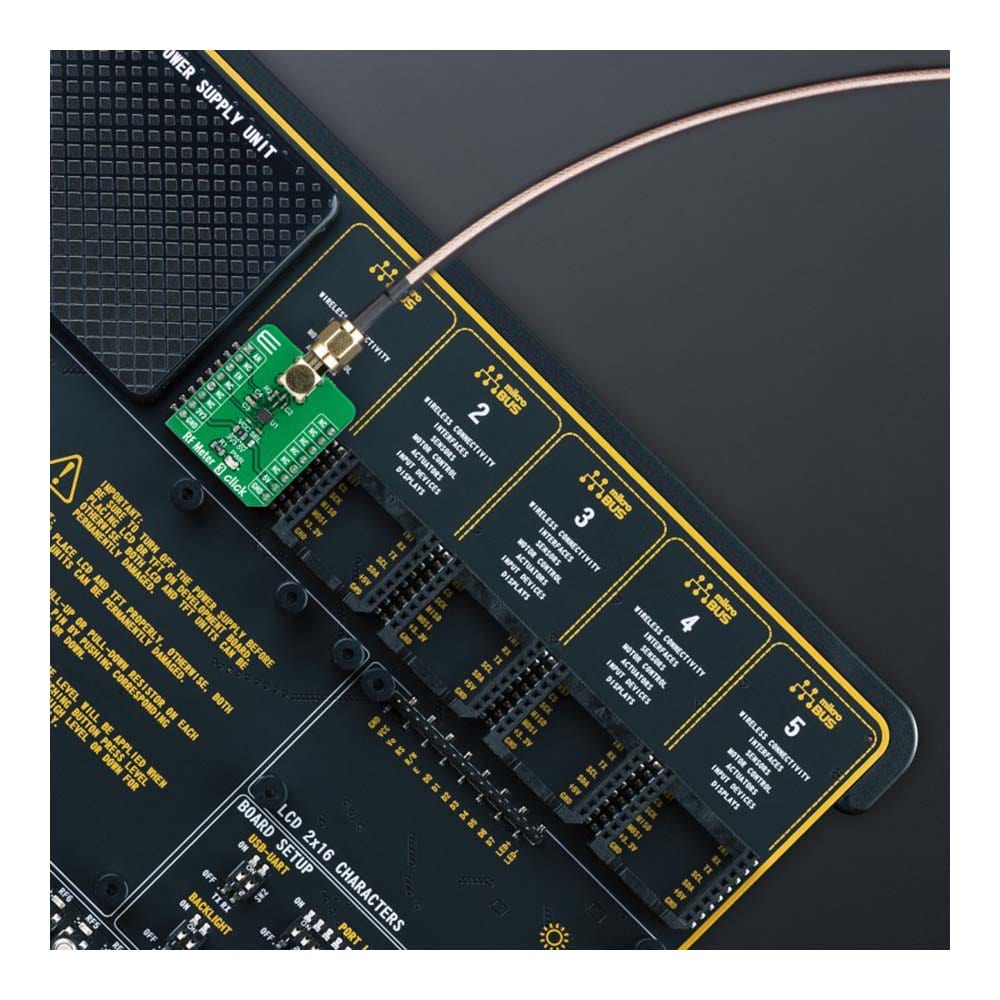
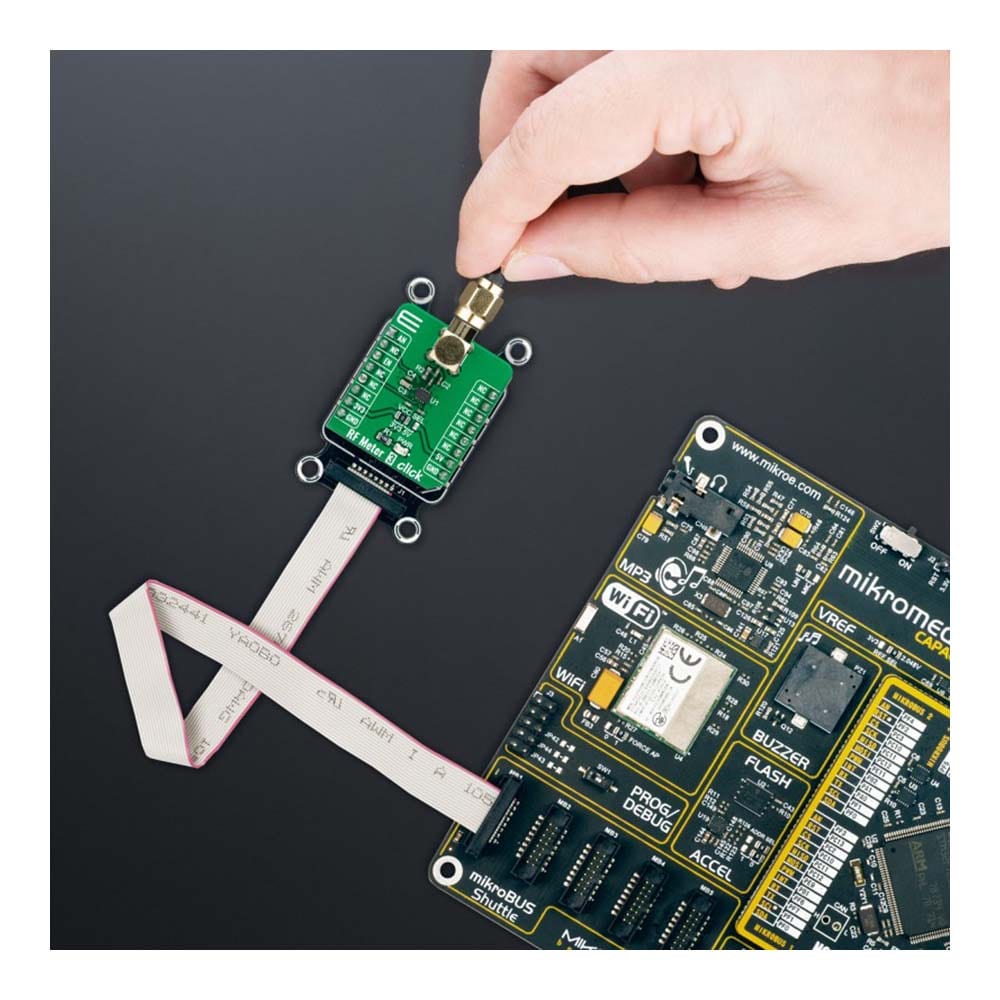
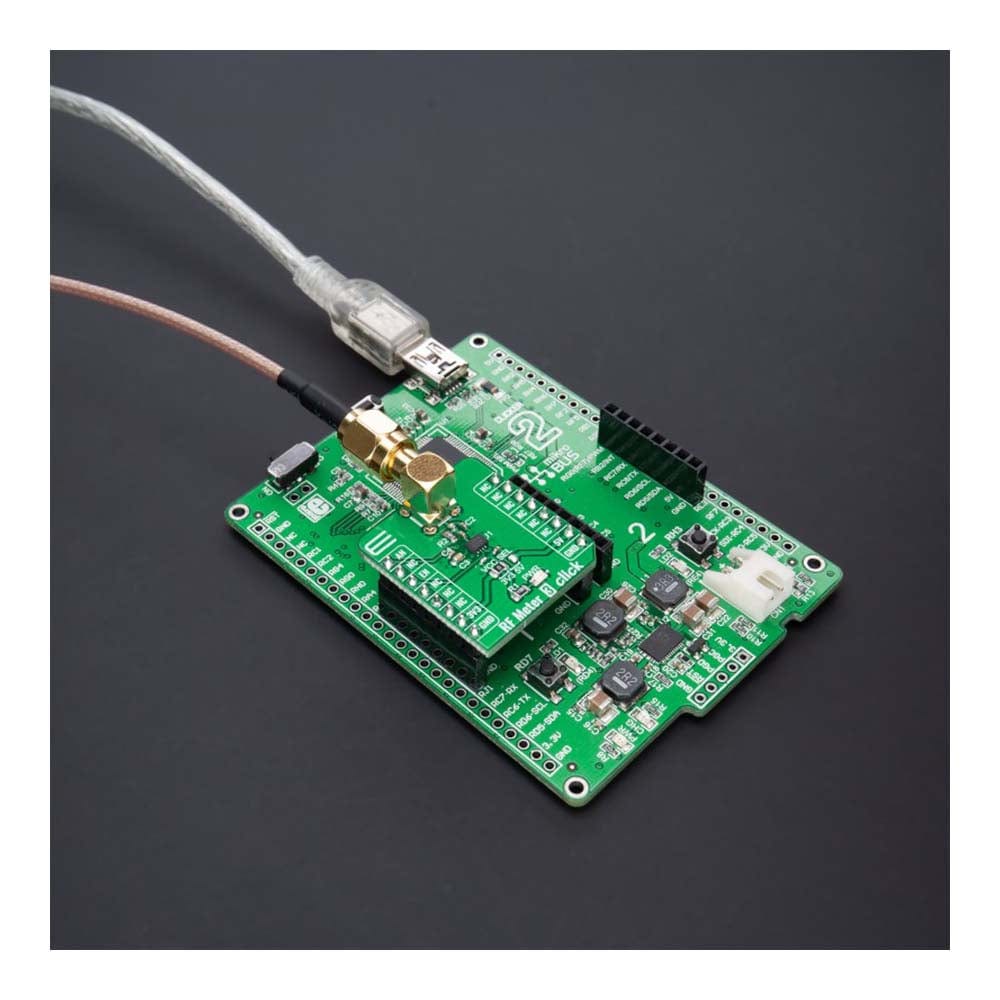
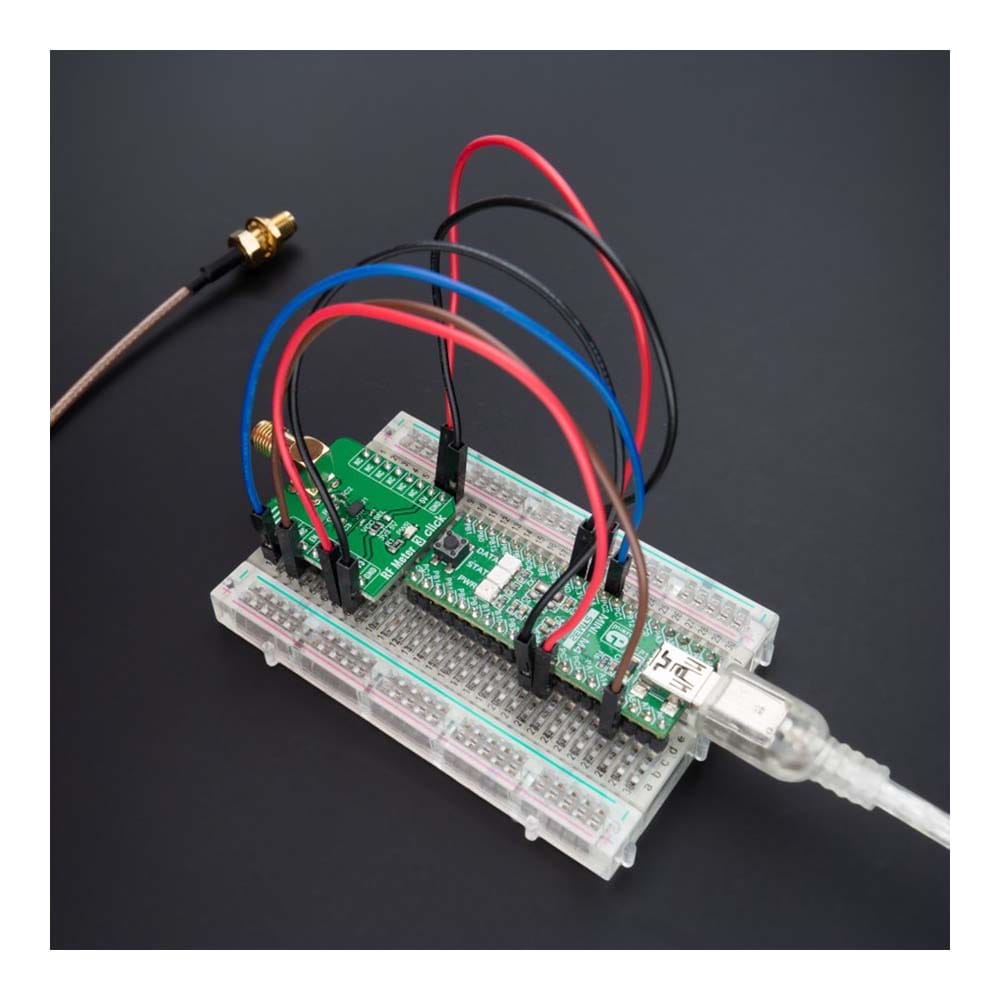
Overview
The RF Meter 3 Click Board™ is a compact add-on board that collects information, analyzes RF power, and displays information in an easy-to-read digital format. This board features the LT5581, a low-power monolithic precision RMS power detector from Analog Devices. The RMS detector uses a proprietary technique to accurately measure the RF power in a range from 2GHz up to 2.6GHz, well-suited for signals with high crest factors. It outputs a DC voltage in linear scale proportional to an RF input signal power in dBm. This Click board™ is suitable for precision power measurement and control for various RF standards, including GSM/EDGE, CDMA, CDMA2000, W-CDMA, TD-SCDMA, UMTS, LTE, and WiMAX.
The RF Meter 3 Click Board™ is supported by a mikroSDK compliant library, which includes functions that simplify software development. This Click board™ comes as a fully tested product, ready to be used on a system equipped with the mikroBUS™ socket.
Downloads
Das RF Meter 3 Click Board™ ist eine kompakte Zusatzplatine, die Informationen sammelt, HF-Leistung analysiert und Informationen in einem leicht lesbaren digitalen Format anzeigt. Diese Platine verfügt über den LT5581, einen monolithischen Präzisions-RMS-Leistungsdetektor mit geringem Stromverbrauch von Analog Devices. Der RMS-Detektor verwendet eine proprietäre Technik zur genauen Messung der HF-Leistung in einem Bereich von 2 GHz bis 2,6 GHz, gut geeignet für Signale mit hohen Scheitelfaktoren. Er gibt eine Gleichspannung in linearer Skala aus, die proportional zu einer HF-Eingangssignalleistung in dBm ist. Dieses Click Board™ eignet sich für präzise Leistungsmessung und -steuerung für verschiedene HF-Standards, einschließlich GSM/EDGE, CDMA, CDMA2000, W-CDMA, TD-SCDMA, UMTS, LTE und WiMAX.
Das RF Meter 3 Click Board™ wird von einer mikroSDK-kompatiblen Bibliothek unterstützt, die Funktionen enthält, die die Softwareentwicklung vereinfachen. Dieses Click Board™ wird als vollständig getestetes Produkt geliefert und ist bereit für den Einsatz auf einem System, das mit der mikroBUS™-Buchse ausgestattet ist.
| General Information | |
|---|---|
Part Number (SKU) |
MIKROE-4906
|
Manufacturer |
|
| Physical and Mechanical | |
Weight |
0.02 kg
|
| Other | |
Country of Origin |
|
HS Code Customs Tariff code
|
|
EAN |
8606027389351
|
Warranty |
|
Frequently Asked Questions
Have a Question?
Be the first to ask a question about this.

